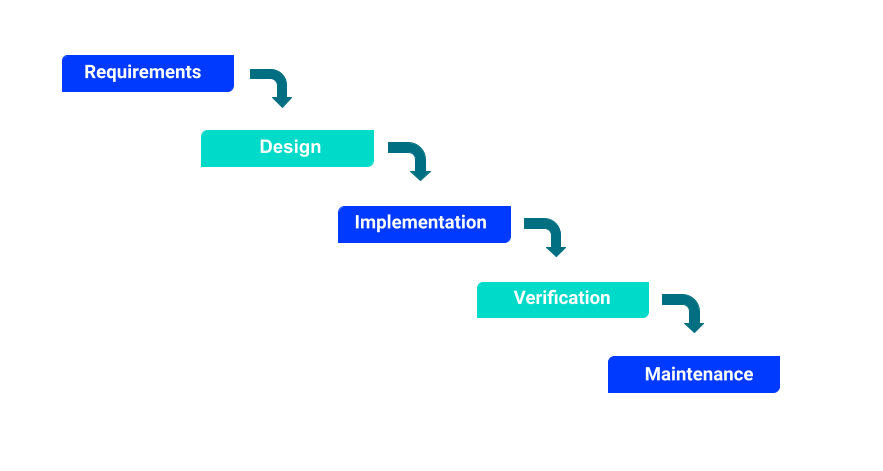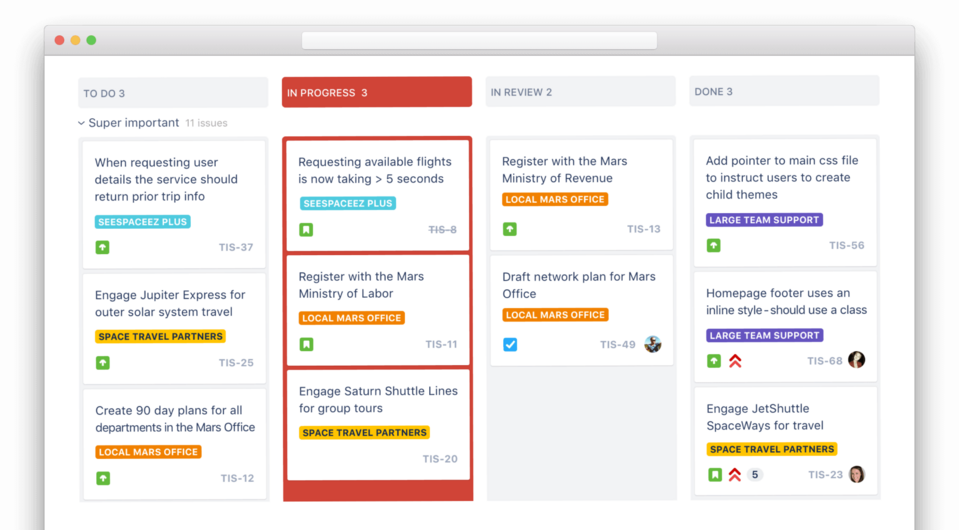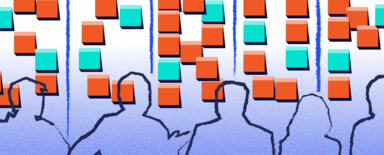
What are Project Management Methodologies and Which One to Choose for your Project?
Implementing projects has become a part of the rhythm of life for the vast majority of companies and organizations, regardless of the industry in which they operate. No wonder that the need for effective, successful project management has become a goal in itself, and a dense network of methodologies has emerged around project management in order to achieve it. In our article, we'll present you some of them and advise you on how to choose the best methodology for your project.
Why may you need project management methodologies?
Project management is defined as a process during which the person managing the project carries out deliberate planning and control of the tasks included in the project, and ensures the appropriate allocation of funds assigned to the project, using the appropriate techniques and methods. They do all this in order to achieve the imposed requirements within the specified period and in accordance with the designated costs.
Project management as a discipline was born from the combination of several types of engineering, as early as the beginning of the 20th century. However, it took five decades to understand that without the right tools and techniques, achieving project success may be just a dream. A project, as a highly complex undertaking that requires the involvement of significant but limited resources, is characterised by high levels of uncertainty and risk. A properly selected project management method provides ways to deal with this, as well as with uncertainty and complexity, so that the project goal is achieved. By using recognized project methodologies, we can be sure that projects are managed in an optimal way, bringing business benefits within the project budget and specified time set.
According to the KPMG report from October 2019, nearly 70% of the surveyed Polish companies use their own internal proprietary project management methodology. Self-created solutions are considered the most effective because they are tailored to the specifics of the projects and the functioning of the organization. However, to develop your own project management method, you should rely on the commonly accepted and proven methodologies. Further in the article, we'll present the most popular methodologies and tell you about our own project management method that works well at Droptica.
Waterfall Project Management
One of the most popular among the traditional project management methodologies is the Waterfall model. According to it, the tasks of the project should be performed one after another. Thus, only after completing one task can you start the next one. Hence, the planning stage is very extensive – precise schedules and cost estimates are created, and the design documentation is very broad.

Waterfall works well in projects where the products and scope of work are constant. It may not be the best choice for comprehensive IT projects, where the market is very dynamic and frequent changes are commonplace. The Waterfall method is less flexible than other project management methodologies because it isn’t possible to go back to the previous development phases. Therefore, after completing the planning phase, we must follow through with what was originally planned. What else makes Waterfall stand out?
Advantages:
- Good project documentation helps to control its course.
- The process is linear so its course is easy to understand or predict.
- At the planning stage, the client can see what will happen and when step by step (at least according to plans).
Disadvantages:
- Any changes to the design can't be made in a flexible manner.
- The first changes are presented and put into action only after all the planned tasks have passed through every design stage.
Agile
In response to classic project management methods, agile methodologies were created around the Agile philosophy. Agile itself isn't a methodology or a process – it's a way of thinking based on flexibility, transparency and common sense. In contrast to the Waterfall model, Agile assumes that at the beginning of the project we aren’t able to precisely plan its entire course. Therefore, the work on a project, carried out in accordance with the spirit of agility, is divided into short cycles – iterations.
What does an iteration mean?
In the iterative approach to project implementation, we create detailed plans only for the nearest period of time, called the iteration. Each iteration has a clearly defined goal and, depending on its implementation, plans for the next one are created. In the course of implementing tasks, the project plan takes shape in response to the current needs – the project goals. This gives an unusual openness to changes in the scope of the project. It's true that the final solution is delivered in smaller parts, but on a regular basis and with greater care for the current purpose of the project. In addition, dividing the work into short iterations allows you to improve the quality of the product – any potential errors or deviations from expectations are detected and removed on an ongoing basis. Iteration is the ground of all project management frameworks that were built based on the Agile philosophy.
Kanban
The Kanban methodology has its roots in the production industry, where kanban as a board was used to visualize the progress of the production tasks. A classic Kanban board includes the following task categories: To do, In Progress, and Done, representing the phase the task is in. The idea behind Kanban is to adjust the number of tasks to be performed by the team – avoiding too many tasks in progress and eliminating bottlenecks that disrupt the process.

The Kanban board in Jira, a project management tool. Source: Atlassian
Kanban is a perfect fit for projects that require a quick response to change while reducing the planning. It may not work well if the project is characterized by a high level of complexity and has multiple stages of implementation.
Advantages:
- Perfectly visualizes the current status of work.
- It helps to identify the tasks that are bottlenecks and directly affect the pace of task completion and downtime.
Disadvantages:
- It requires constant control and updating to correctly visualize the current course of the project.
- It won't suit interdisciplinary, large project teams and task-rich projects well.
- It's a very basic method, so it may not be enough for effective project management.
Scrum
Scrum assumes great involvement of the team and its self-organisation. Although it provides freedom in terms of implementation, its structure and basic principles are clearly defined and should be followed by the project team to take full advantage of this method. The Scrum methodology is easiest to describe through the 3-5-3 structure, which in turn corresponds to: 3 roles, 5 events, and 3 artifacts.
3 roles in Scrum
Product Owner is responsible for the product backlog, that is a set of all tasks to be performed. They set the priorities, have a clear product vision, and work closely with the rest of the design team to guide the works. They verify the value delivered on each iteration, but trust in their team's abilities.
Scrum Master cares about adhering to the Scrum rules. They're a coach, a mentor, and help the project team work effectively by identifying and reducing the bottlenecks. They make the team focused on achieving a common goal, ensure continuous improvement of the process and the value delivered to the client.
Development Team is a self-organising and self-managing team that carries out tasks included in the sprint backlog (the set of tasks to be completed in a given sprint), working closely with the Product Owner.
5 events in Scrum
Sprint is the time period (always the same within a given project) during which the project team completes the tasks scheduled in the sprint backlog. During a sprint, the Product Owner can test ready-made solutions on an ongoing basis, but they can't change the content of the backlog.
Sprint planning is an event where the development team and Product Owner jointly define the priorities and scope of a future sprint.
Daily meeting is a daily 15-minute-long meeting of the development team with the Scrum Master or the Product Owner. During that time the team talks about what has been achieved the previous day, what will be done today, and reports whether there are any problems that may affect the success, that is – achieving the sprint's goal.
Sprint Review is a meeting that consists in presenting the achieved results of a sprint. Of course, the review takes place at the end of a given sprint and is often combined with a retrospective. The entire project team – developers, the Scrum Master and the Product Owner – always participates in the sprint review. It isn’t uncommon for the stakeholders (individuals or organizations involved or interested in the project) to also be invited to the meeting.
Sprint retrospective is a meeting where the project team discusses the past sprint to determine what could've been done better and to be able to implement it in the next sprint.
3 artifacts
Product backlog is a set of tasks, the completion of which will lead to achieving the project goal.
Sprint backlog is a set of tasks from the product backlog, the completion of which will lead to achieving the sprint goal.
Product increment is the goal of every sprint, the specific value that the project team provides at the end of a given sprint.

When to use Scrum methodology?
Scrum works for highly flexible teams that can quickly adapt to change and are managed by experienced managers with a unique ability to prioritize tasks. The Scrum method is one of those iterative methodologies in which we can quickly test new solutions and immediately fix any errors.
Advantages:
- Focus on continuous improvement of the project implementation process.
- Ability to divide the project into smaller parts that can be implemented in accordance with the client's priorities.
Disadvantages:
- The success of the project depends on the close cooperation of the team and compliance with the Scrum rules and regulations.
- The lack of breaks between sprints may cause the project team members to burn out quickly.
Scrumban
Scrumban was created as a combination of the Kanban and Scrum approaches. It employs the agile approach of Scrum, but takes it to an even higher level. Scrumban deviates from the restrictive use of sprints, thanks to which it allows for the freedom of choosing the tasks to be performed. The project team focuses on priorities without dreading the moment of reviewing what has been accomplished in accordance with the plan within a given time period.
Design on demand is Kanban's domain, but Scrumban borrowed more from this methodology. As in Kanban, workflow visualization is very important in the Scrumban methodology. The use of a Kanban board provides all team members with constant access to project information.

Source: Kissflow
Scrumban works well for difficult, demanding projects, full of unexpected changes of priorities. It's particularly perfect for project management consisting in improving a newly-created product or creating Proof of Concept solutions, where individual functionalities will be extended with successive iterations.
Advantages:
- It perfectly visualizes the workflow in the project.
- It helps to quickly identify which tasks contribute to the formation of bottlenecks.
- It cuts down the complex rules and theories, and reduces the number of meetings, which saves time and increases the efficiency of the project team.
Disadvantages:
- Every team member can work on no more than one task at a time.
- Giving up the daily meetings limits the role of the Project Manager in controlling the process and their possible rapid response.
What methodology do we use at Droptica?
At Droptica, we work in the spirit of Agile, based on flexibility, transparency and, above all, common sense. When managing projects, we always focus on the needs of our project teams and the individual requirements of the client.
Our very own project management method is characterised by agility, and during its creation we relied, for example, on the Scrum, Kanban and Scrumban methodologies.
As in Scrum, sprints set the rhythm for our work. We deliver value within short iterations, but we don't always plan the entire sprint with perfect accuracy. Thanks to this, we leave some space for a change of priorities and implementation of small, but very important from a business point of view, tasks appearing "on the fly". Scrumban gives us the freedom to choose the tasks to be performed. Thanks to its flexibility, the project team can always focus on the most important tasks.
For most projects, we use a Kanban board, which perfectly visualizes the progress of the team's work and makes it easier for the Project Manager to remove possible bottlenecks. We decompose the requirements and estimate them twice a week during backlog grooming sessions. Before transferring tasks to a sprint, we make sure that they are in line with the client's expectations (in terms of both budget and functions). We also rely on the needs of the company with which we collaborate in the case of reporting. We provide reports in accordance with the individual needs of the client, not necessarily on the basis of a sprint.
We meet every day for daily meetings and the Project Manager takes over the role of the Scrum Master in most projects.
We are guided by continuous development and process improvement, which is why retrospectives are held not only as part of the project sprints. We meet periodically to discuss the work of project teams and verify the effectiveness of internal processes and the tools used.
Which methodology is the best for your project?
Choosing a project management methodology isn’t easy. Every project is a unique, one-of-a-kind undertaking that requires special treatment. In addition, the method should meet the needs of the team that'll be responsible for its implementation. Unfortunately, the black and white approach, recognizing the superiority of one of the methods, won’t work here. Each of them, in addition to the advantages, is burdened with the disadvantages that may arise in your project.
To choose the right methodology, we recommend looking for the answers to a few key questions:
- How involved and available will the client or end user be in the project implementation process?
- What are the client's workflow tracking needs?
- Does the client anticipate introducing a large number of changes?
- How well-documented is the product specification?
- How quickly must the product resulting from the project implementation be delivered?
- What is the experience of the organization or members of the project team in working with a given method?
If the answers to the above questions and the knowledge you already have about popular project management methods are still not enough, and you feel lost among the many project management methodologies, our Drupal agency will be happy to help you. Together, we'll take a look at your project, talk about its implementation and develop clear rules of cooperation. We'll properly adjust the way of managing your project to ensure its success.










